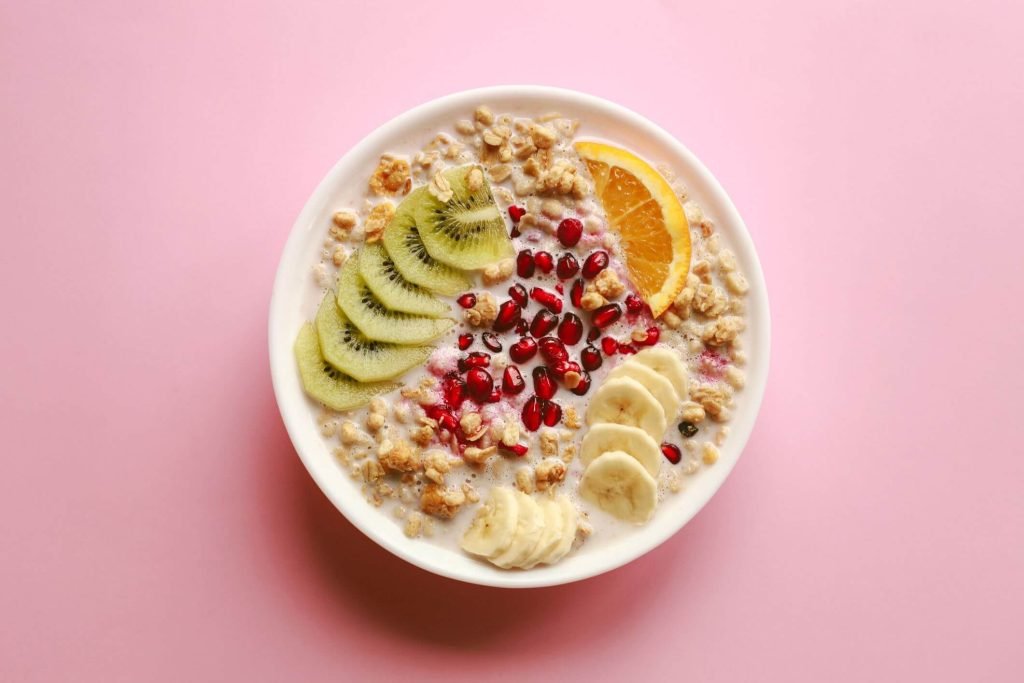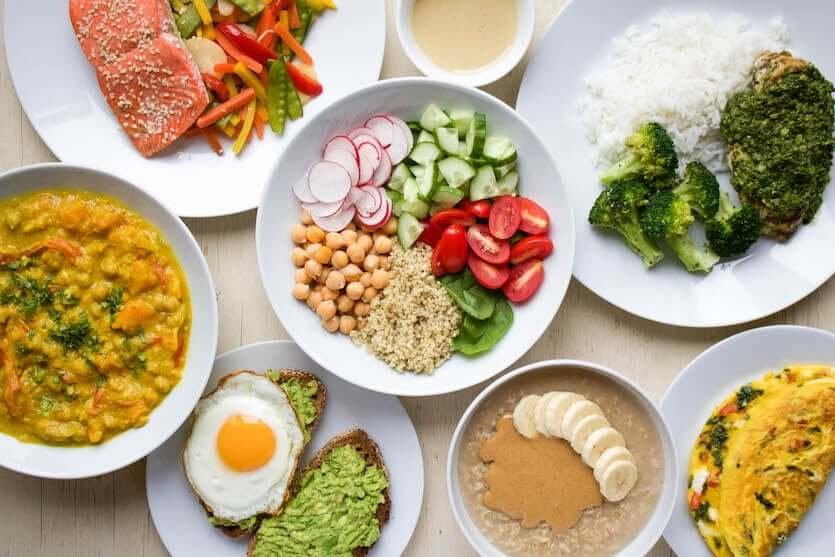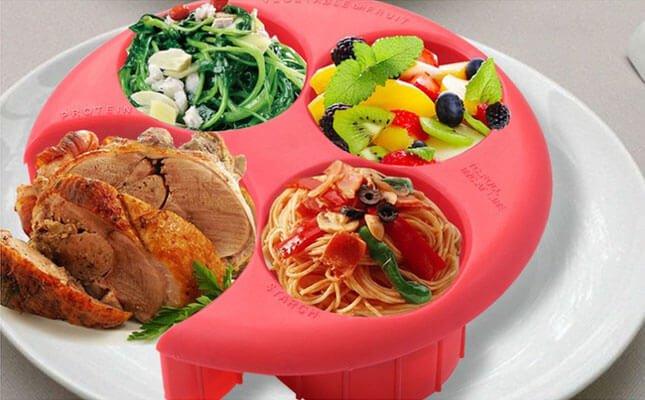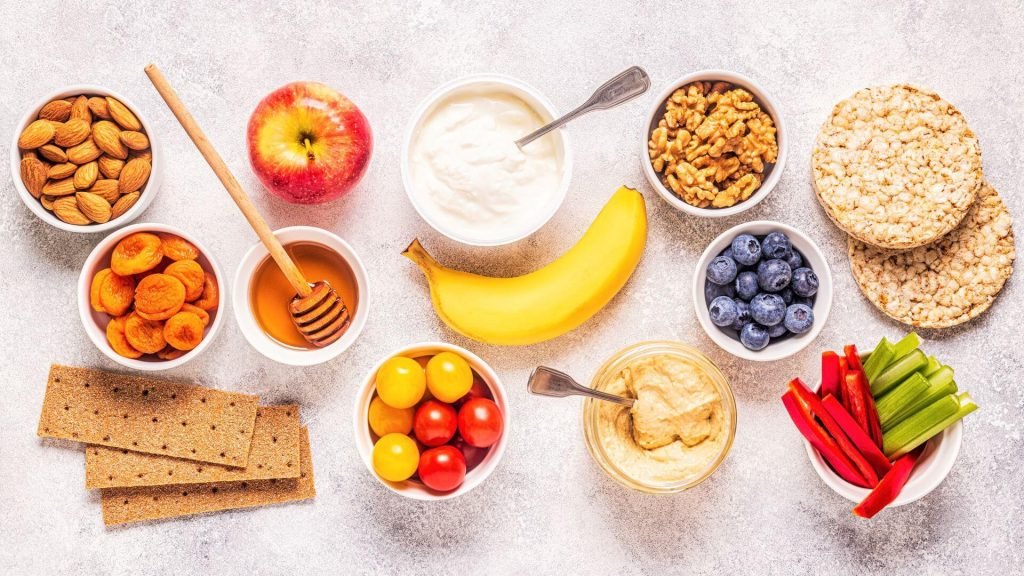
Maintaining a healthy and balanced diet is crucial for everyone, especially busy professionals who often find themselves caught up in demanding work schedules and long hours. A well-planned and balanced diet can provide the necessary fuel and nutrients to keep energy levels high, boost productivity, and support overall well-being. However, the challenges of time constraints and limited availability often lead to unhealthy eating habits, such as relying on processed and fast food options.
To combat these challenges and ensure optimal nutrition, a balanced diet plan tailored to the needs of busy professionals is essential. Such a plan should incorporate a variety of nutrient-dense foods, including fruits, vegetables, whole grains, lean proteins, and healthy fats, while minimizing the intake of refined sugars and saturated fats. Additionally, portion control and regular meal timings play a vital role in maintaining stable energy levels throughout the day.
In this guide, we will outline a practical and achievable balanced diet plan specifically designed for busy professionals. By incorporating nutritious meals and snacks into a hectic schedule, professionals can prioritize their health and well-being, ultimately leading to increased productivity, improved focus, and enhanced overall quality of life.
Healthy Eating Tips for Busy Professionals
A balanced diet plan for busy professionals is essential to maintain good health and energy levels while managing a hectic schedule. Here’s a practical and achievable diet plan that incorporates nutrient-rich foods and promotes overall well-being:
1. Start with a Healthy Breakfast:

Starting your day with a healthy breakfast is crucial for providing energy and setting the tone for a balanced diet. Here are some nutritious options for a healthy breakfast:
- Overnight Oats: Prepare a jar of overnight oats by combining rolled oats, your choice of milk (dairy or plant-based), chia seeds, and a sweetener like honey or maple syrup. Let it sit in the fridge overnight and top it with fruits, nuts, or seeds in the morning.
- Veggie Omelet: Whip up a quick omelet using egg whites or whole eggs. Add vegetables like spinach, bell peppers, onions, or mushrooms for an extra dose of nutrients. Serve with whole grain toast or wrap it in a whole wheat tortilla for a portable option.
- Greek Yogurt Parfait: Layer Greek yogurt with fresh fruits, such as berries or sliced bananas, and sprinkle some granola or nuts on top for added crunch and fiber. Greek yogurt provides protein and probiotics to support gut health.
- Whole Grain Toast with Nut Butter: Toast a slice of whole grain bread and spread a tablespoon of nut butter like almond or peanut butter. Top it with sliced fruits like banana or strawberries for a well-rounded breakfast.
- Smoothie: Blend together a combination of fruits, vegetables, a liquid base (milk, yogurt, or plant-based milk), and add-ons like protein powder, chia seeds, or spinach for an extra nutritional boost. Portable and customizable, smoothies are a convenient option for busy professionals.
Remember to listen to your body’s hunger cues and adjust portion sizes accordingly. Also, try to include a source of protein and fiber in your breakfast to keep you satiated and energized throughout the morning.
2. Plan Nutrient-Dense Lunches:

When planning nutrient-dense lunches for busy professionals, it’s important to focus on incorporating a variety of whole foods that provide essential nutrients. Here are some ideas to help you create a balanced and nourishing lunch:
- Salad with Protein: Create a salad base with a variety of leafy greens, such as spinach or mixed greens. Add lean protein sources like grilled chicken, tofu, chickpeas, or boiled eggs. Enhance the flavor with vegetables like cherry tomatoes, cucumbers, bell peppers, and top it off with a homemade dressing made from olive oil, vinegar, and herbs.
- Grain Bowl: Start with a base of whole grains like quinoa, brown rice, or bulgur. Add roasted or steamed vegetables such as broccoli, sweet potatoes, and Brussels sprouts. Incorporate a source of protein like baked salmon, grilled shrimp, or tempeh. Finish it off with a drizzle of tahini sauce or a sprinkle of seeds for added texture and nutrition.
- Wrap or Sandwich: Choose whole grain wraps or bread as a base. Fill them with lean proteins like turkey, chicken, or tuna, along with plenty of fresh vegetables like lettuce, tomatoes, cucumbers, and avocado. You can also add a spread of hummus or mashed avocado for extra flavor and healthy fats.
- Homemade Soup: Prepare a batch of homemade soup packed with vegetables, legumes, and lean protein. Examples include lentil soup, vegetable minestrone, or chicken and vegetable soup. Portion it into individual containers for easy grab-and-go lunches throughout the week.
- Stir-Fry: Whip up a quick stir-fry using a variety of colorful vegetables like bell peppers, broccoli, carrots, and snap peas. Add your choice of protein such as shrimp, tofu, or lean beef, and flavor it with low-sodium soy sauce, garlic, and ginger. Serve it over brown rice or quinoa for a satisfying and nutrient-rich lunch.
- Bento Box: Create a bento-style lunch box with compartments for a balanced meal. Include a combination of lean protein like grilled chicken or fish, whole grains like quinoa or brown rice, steamed or roasted vegetables, and a side of fresh fruits or yogurt for dessert.
Remember to plan and prep your lunches in advance to save time during busy workdays. Pack your lunch in reusable containers to promote sustainability and portion control. By choosing nutrient-dense options, you’ll fuel your body with the necessary nutrients to stay focused and energized throughout the day.
3. Snack Smartly:

Snacking smartly is essential for busy professionals to curb hunger, maintain energy levels, and avoid unhealthy food choices. Here are some tips for smart snacking:
- Opt for Whole Foods: Choose snacks that are minimally processed and provide nutritional value. Examples include fresh fruits, raw vegetables, nuts, seeds, or plain Greek yogurt. These snacks are packed with vitamins, minerals, fiber, and healthy fats.
- Portion Control: Practice portion control to avoid mindless snacking. Pre-portion snacks into small containers or use snack-sized bags. This helps prevent overeating and allows you to grab snacks easily when on the go.
- Protein-Packed Snacks: Include protein-rich snacks to keep you satisfied and support muscle repair. Options like hard-boiled eggs, cottage cheese, edamame, or roasted chickpeas provide protein along with other important nutrients.
- Healthy Trail Mix: Create your own trail mix by combining unsalted nuts, seeds, and dried fruits. This provides a balance of healthy fats, protein, and fiber. Be mindful of portion sizes, as nuts and dried fruits are calorie-dense.
- Nutritious Bars: Choose bars that are made with whole food ingredients, low in added sugars, and high in fiber and protein. Look for options like fruit and nut bars, protein bars with natural ingredients, or homemade energy bars.
- Hydration with Infused Water: Stay hydrated by infusing water with fresh fruits, herbs, or cucumber slices. This adds flavor without the added sugars found in many beverages. Carry a reusable water bottle with you to stay hydrated throughout the day.
- Healthy Dip and Veggie Sticks: Pair fresh vegetables like carrot sticks, celery, or bell pepper strips with healthy dips such as hummus, Greek yogurt, or guacamole. This combination provides fiber, vitamins, and antioxidants.
- Mindful Snacking: Avoid snacking out of boredom or stress. Practice mindful snacking by paying attention to your hunger levels and choosing snacks that nourish your body rather than relying on empty-calorie options.
- Planning Ahead: Prepare snacks in advance and carry them with you to avoid relying on vending machines or unhealthy options. Keep a stash of pre-cut fruits, homemade granola bars, or roasted chickpeas at your workplace or in your bag.
By snacking smartly, you can maintain a balanced diet, support your energy levels, and avoid unhealthy food choices. It’s important to listen to your body’s hunger cues and choose snacks that provide nourishment and satisfaction throughout the day.
4. Hydrate Throughout the Day:

Staying hydrated throughout the day is vital for maintaining optimal health and supporting the body’s various functions. Here are some tips to help you hydrate effectively:
- Drink Ample Water: Water is the best and most natural choice for hydration. Aim to drink at least 8 cups (64 ounces) of water per day, or more if you are physically active or in a hot environment. Keep a reusable water bottle with you as a reminder to sip regularly.
- Set Reminders: In a busy work environment, it’s easy to forget to drink water. Set reminders on your phone or use apps that send prompts to encourage regular hydration breaks throughout the day.
- Infused Water: Add flavor to your water by infusing it with slices of fruits like lemon, lime, cucumber, or berries. This adds a refreshing taste without any added sugars or artificial flavors.
- Herbal Teas: Enjoy herbal teas like chamomile, peppermint, or green tea for hydration. They provide added benefits like antioxidants and can be consumed hot or cold.
- Limit Sugary Drinks: Avoid sugary beverages such as soda, energy drinks, or sweetened fruit juices, as they can lead to excess calorie intake and provide little hydration. Opt for healthier alternatives like infused water or unsweetened herbal teas instead.
- Monitor Urine Color: Keep an eye on the color of your urine. Pale yellow or clear urine indicates good hydration, while dark yellow urine may indicate dehydration. Use this as a general guideline to gauge your hydration status.
- Hydrating Foods: Include foods with high water content in your diet, such as watermelon, cucumbers, oranges, strawberries, and leafy greens. These foods can contribute to your overall hydration and provide additional nutrients.
- Hydration at Work: Keep a water bottle or glass at your desk or workspace as a visual reminder to drink throughout the day. Take short breaks to stretch and hydrate, especially during busy periods.
- Hydration for Physical Activity: If you engage in physical activity during your workday, ensure you drink water before, during, and after exercise to replace fluids lost through sweat.
Remember that individual hydration needs may vary depending on factors like activity level, climate, and overall health. Listen to your body’s cues and drink when you feel thirsty. By prioritizing hydration, you can support your overall well-being and maintain optimal performance throughout your busy professional life.
5. Dinner with Balance:

Having a balanced dinner is crucial for ending the day on a nutritious note and supporting overall health. Here are some tips for creating a well-rounded and balanced dinner:
- Lean Protein Source: Include a lean protein source as the centerpiece of your dinner. Options include skinless poultry, fish, tofu, tempeh, legumes, or lean cuts of beef or pork. These provide essential amino acids for muscle repair and growth.
- Abundance of Vegetables: Fill half of your plate with a variety of colorful vegetables. Aim for a mix of leafy greens, cruciferous vegetables (broccoli, cauliflower), bell peppers, carrots, zucchini, or any seasonal produce. Vegetables are packed with fiber, vitamins, minerals, and antioxidants.
- Whole Grains or Starchy Vegetables: Add a serving of whole grains or starchy vegetables to your meal. Choose options like quinoa, brown rice, whole wheat pasta, sweet potatoes, or whole grain bread. These provide energy, fiber, and important nutrients.
- Healthy Fats: Incorporate healthy fats into your dinner. Use olive oil, avocado, nuts, or seeds as sources of monounsaturated and polyunsaturated fats. These fats are beneficial for heart health and help with the absorption of fat-soluble vitamins.
- Flavor with Herbs and Spices: Enhance the taste of your dishes with herbs, spices, and seasonings instead of relying on excessive salt or unhealthy sauces. Experiment with flavors like garlic, ginger, turmeric, basil, thyme, or rosemary for added depth and health benefits.
- Mindful Portion Control: Be mindful of portion sizes to avoid overeating. Use smaller plates and bowls to visually create a satisfying meal. Listen to your body’s hunger and fullness cues, and stop eating when you feel comfortably satisfied.
- Homemade Cooking: Prepare your meals at home as much as possible. This way, you have control over the ingredients and can avoid excessive sodium, unhealthy fats, and additives commonly found in processed or restaurant meals.
- Balanced Meal Combinations: Create balanced meal combinations by incorporating protein, vegetables, and whole grains. For example, grilled chicken breast with roasted vegetables and quinoa, or a tofu stir-fry with brown rice and steamed broccoli.
- Hydrate with Water: Drink water with your dinner to stay hydrated. Avoid sugary beverages or excessive alcohol consumption, as they can add empty calories and affect your overall health.
Remember, everyone’s dietary needs and preferences are unique. It’s essential to consult with a healthcare professional or registered dietitian for personalized advice based on your specific dietary requirements and health conditions.
6. Mindful Eating and Portion Control:

Practicing mindful eating and portion control during meals can help busy professionals maintain a balanced diet and prevent overeating. Here are some strategies to incorporate mindful eating and portion control:
- Slow Down: Take your time to chew your food thoroughly and savor the flavors. Eating slowly allows your brain to register feelings of fullness and satisfaction, preventing you from overeating.
- Pay Attention to Hunger and Fullness Cues: Tune in to your body’s signals of hunger and fullness. Eat when you feel moderately hungry and stop eating when you feel comfortably satisfied, but not overly full.
- Use Smaller Plates and Bowls: Opt for smaller dishware to help control portion sizes. Using a smaller plate or bowl can visually trick your mind into thinking you have a larger portion, promoting portion control.
- Fill Half Your Plate with Vegetables: Make vegetables the star of your meal and fill at least half of your plate with a variety of colorful vegetables. They are low in calories but high in fiber and nutrients, helping you feel full and satisfied.
- Practice Mindful Portioning: Instead of eating straight from a package or large container, portion out your food onto a plate or bowl. This helps you be more aware of the quantity of food you are consuming and prevents mindless overeating.
- Be Mindful of Liquid Calories: Be cautious of liquid calories from sugary beverages, alcoholic drinks, or even excessive amounts of healthy smoothies. These can add up quickly and contribute to weight gain. Opt for water, unsweetened tea, or flavored water with no added sugars.
- Listen to Your Body: Eat until you feel satisfied, not until your plate is empty. Listen to your body’s hunger and fullness signals, and trust your internal cues rather than external factors like portion sizes or societal norms.
- Minimize Distractions: Avoid eating in front of screens or while working. Create a calm eating environment free from distractions to focus on the sensory experience of eating and to be more in tune with your body’s signals.
- Practice Gratitude and Mindfulness: Before you start eating, take a moment to express gratitude for the food in front of you. Be present and mindful while eating, paying attention to the taste, texture, and aroma of each bite.
By practicing mindful eating and portion control, you can foster a healthier relationship with food, prevent overeating, and make conscious choices that support a balanced diet. Remember that it takes time and practice to develop these habits, so be patient with yourself and embrace the journey towards mindful eating.
7. Plan for Healthy Snacks:

Planning for healthy snacks is an important aspect of maintaining a balanced diet for busy professionals. Having nutritious snacks readily available can help curb hunger, prevent unhealthy food choices, and provide sustained energy throughout the day. Here are some tips for planning and incorporating healthy snacks into your routine:
- Plan Ahead: Take a few minutes at the start of the week to plan your snacks for the upcoming days. Consider your schedule, the nutritional needs of your body, and any specific dietary preferences or restrictions you may have.
- Choose Nutrient-Dense Options: Opt for snacks that provide a good balance of macronutrients (carbohydrates, protein, and healthy fats) and are rich in vitamins, minerals, and fiber. Examples include fresh fruits, raw or roasted nuts and seeds, Greek yogurt, hummus with vegetables, or whole grain crackers with nut butter.
- Portion Control: Pre-portion your snacks into small containers or snack bags to prevent mindless overeating. This helps you maintain control over portion sizes and prevents consuming excessive calories.
- Pack Portable Snacks: Select snacks that are easy to carry and consume on-the-go. This ensures that you have healthy options readily available when you’re busy or away from home. Consider items like granola bars, trail mix, pre-cut fruits and vegetables, or single-serving packs of nut butter.
- Keep Healthy Snacks Visible: Make healthy snacks more accessible by placing them in visible locations such as your desk drawer, bag, or refrigerator. This makes them the convenient and default choice when hunger strikes.
- Prepare Snacks in Advance: Dedicate some time during the week to prepare and portion out snacks in advance. Cut up vegetables, wash berries, or make homemade energy balls or protein bars. This way, you have grab-and-go options readily available when you need them.
- Include Protein: Incorporate protein-rich snacks into your plan, as protein helps keep you feeling full and satisfied. Greek yogurt, cottage cheese, boiled eggs, or protein bars made with quality ingredients are excellent options.
- Focus on Whole Foods: Prioritize whole, unprocessed foods for your snacks. They are typically lower in added sugars, unhealthy fats, and artificial additives. Choose whole fruits instead of fruit juices, and opt for homemade trail mix rather than pre-packaged options.
- Mindful Snacking: Practice mindful eating while enjoying your snacks. Take the time to sit down, savor the flavors, and appreciate each bite. This can help you recognize feelings of fullness and prevent mindless snacking.
Remember that individual nutritional needs may vary. It’s essential to choose snacks that align with your specific dietary requirements and preferences. Consulting with a registered dietitian can provide personalized guidance based on your unique needs and goals. By planning and incorporating healthy snacks into your routine, you can fuel your body with nourishing options and maintain a balanced diet, even when you’re busy.
8. Avoid Late-Night Binging:

Avoiding late-night binging is essential for maintaining a balanced diet and supporting healthy eating habits. Here are some strategies to help you curb late-night cravings and promote mindful eating:
- Identify Triggers: Understand the underlying reasons behind your late-night binging. It could be emotional stress, boredom, fatigue, or habit. Recognize these triggers and find alternative ways to address them, such as engaging in relaxation techniques, pursuing a hobby, or practicing self-care.
- Create a Regular Sleep Schedule: Establish a consistent sleep routine to ensure you are well-rested. Fatigue and sleep deprivation can increase cravings and make it harder to resist unhealthy late-night snacks. Aim for 7-8 hours of quality sleep each night.
- Plan Balanced Dinners: Ensure that your dinner is satisfying and nutrient-dense. Include a balance of protein, vegetables, and whole grains to keep you satiated for longer. This can help prevent excessive hunger and cravings later in the evening.
- Practice Mindful Eating: Be mindful of your eating patterns throughout the day. Avoid skipping meals or restricting calories, as this can lead to intense hunger later on. Eat balanced meals and snacks at regular intervals to maintain stable blood sugar levels.
- Stay Hydrated: Sometimes, thirst can be mistaken for hunger. Stay hydrated by drinking water throughout the day, and if you feel a late-night craving, try having a glass of water first to determine if you are actually thirsty.
- Create a No-Food Zone: Designate specific areas in your home, such as your bedroom or living room, as “no-food zones.” This can help create a physical boundary that reminds you not to eat mindlessly in these spaces.
- Practice Mindful Distraction: If you find yourself craving snacks in the evening, engage in a mindful distraction instead. Engage in activities that occupy your mind and keep your hands busy, such as reading a book, practicing a hobby, or engaging in light exercise.
- Stock Up on Healthy Snacks: If you tend to snack in the evenings, make sure to have healthy options available. Stock your kitchen with fruits, vegetables, Greek yogurt, nuts, or air-popped popcorn as alternatives to high-calorie, processed snacks.
- Seek Support: If late-night binging becomes a persistent challenge, consider seeking support from a healthcare professional or a registered dietitian. They can provide personalized guidance and strategies to address your specific situation.
Remember, breaking the habit of late-night binging takes time and effort. Be patient with yourself and focus on creating sustainable, healthy habits that support your overall well-being.
9. Stay Active:

Staying active is an essential component of a balanced and healthy lifestyle for busy professionals. Regular physical activity not only supports physical well-being but also improves mental clarity, reduces stress, and boosts energy levels. Here are some tips to help you stay active amidst a busy schedule:
- Schedule Exercise: Treat exercise as a non-negotiable appointment in your calendar. Set aside dedicated time for physical activity, whether it’s in the morning, during lunch breaks, or after work. Consistency is key, so aim for at least 150 minutes of moderate-intensity aerobic activity or 75 minutes of vigorous-intensity activity per week.
- Incorporate Active Commuting: If feasible, consider active commuting options such as walking, cycling, or using public transportation. This allows you to squeeze in physical activity while traveling to and from work.
- Breaks for Movement: Take short breaks throughout the day to stretch and move your body. Get up from your desk, walk around the office, or do some simple exercises like squats, lunges, or desk stretches. These brief bursts of activity can help break up sedentary periods.
- Make Use of Technology: Utilize fitness apps, wearable devices, or online workout platforms that offer guided exercise routines. These tools provide flexibility and convenience, allowing you to exercise at home or on the go.
- Active Lunch Breaks: Instead of sitting at your desk during lunch breaks, use that time for physical activity. Go for a brisk walk, do a quick workout, or participate in a fitness class nearby. This can help refresh your mind and energize your body for the rest of the day.
- Find Activities You Enjoy: Choose activities that you genuinely enjoy to make exercise more sustainable and enjoyable. It could be dancing, swimming, hiking, playing a sport, or joining group fitness classes. When you find pleasure in what you do, it becomes easier to stay consistent.
- Involve Colleagues or Friends: Exercise with colleagues or friends to make it a social activity. Join group fitness classes together, go for walks or runs during breaks, or organize friendly competitions. Having a workout buddy can provide motivation and accountability.
- Break Up Sedentary Time: If your work involves long periods of sitting, make a conscious effort to break up sedentary time. Stand up and stretch every hour, take walking meetings whenever possible, or consider using a standing desk to stay active during work hours.
- Prioritize Active Weekends: Use your weekends to engage in more extensive physical activities. Plan outdoor activities like hiking, biking, or playing sports. It’s a great way to recharge, spend time with loved ones, and incorporate exercise into your leisure time.
Remember to consult with a healthcare professional before starting any new exercise routine, especially if you have any underlying health conditions. Finding ways to stay active within your busy schedule is crucial for maintaining a healthy lifestyle and optimizing your overall well-being.
Conclusion
In conclusion, maintaining a balanced diet as a busy professional is achievable with careful planning and conscious choices. By following a few key strategies, such as starting with a healthy breakfast, planning nutrient-dense lunches, snacking smartly, hydrating throughout the day, having balanced dinners, practicing mindful eating and portion control, and avoiding late-night binging, you can nourish your body with the right nutrients and sustain your energy levels.
It’s crucial to prioritize your health by making time for physical activity and staying active, even amidst a busy schedule. Finding enjoyable activities and incorporating them into your routine can make exercise more sustainable and beneficial for your overall well-being.
Additionally, planning for healthy snacks ensures that you have nutritious options readily available to fuel your body and prevent unhealthy food choices. By selecting nutrient-dense snacks, practicing portion control, and preparing snacks in advance, you can make smart choices that support your dietary goals and prevent mindless eating.
Remember, everyone’s dietary needs and preferences are unique, so it’s important to listen to your body, consult with healthcare professionals or registered dietitians, and make adjustments accordingly. By prioritizing your well-being through balanced eating habits, regular exercise, and mindful choices, you can thrive
